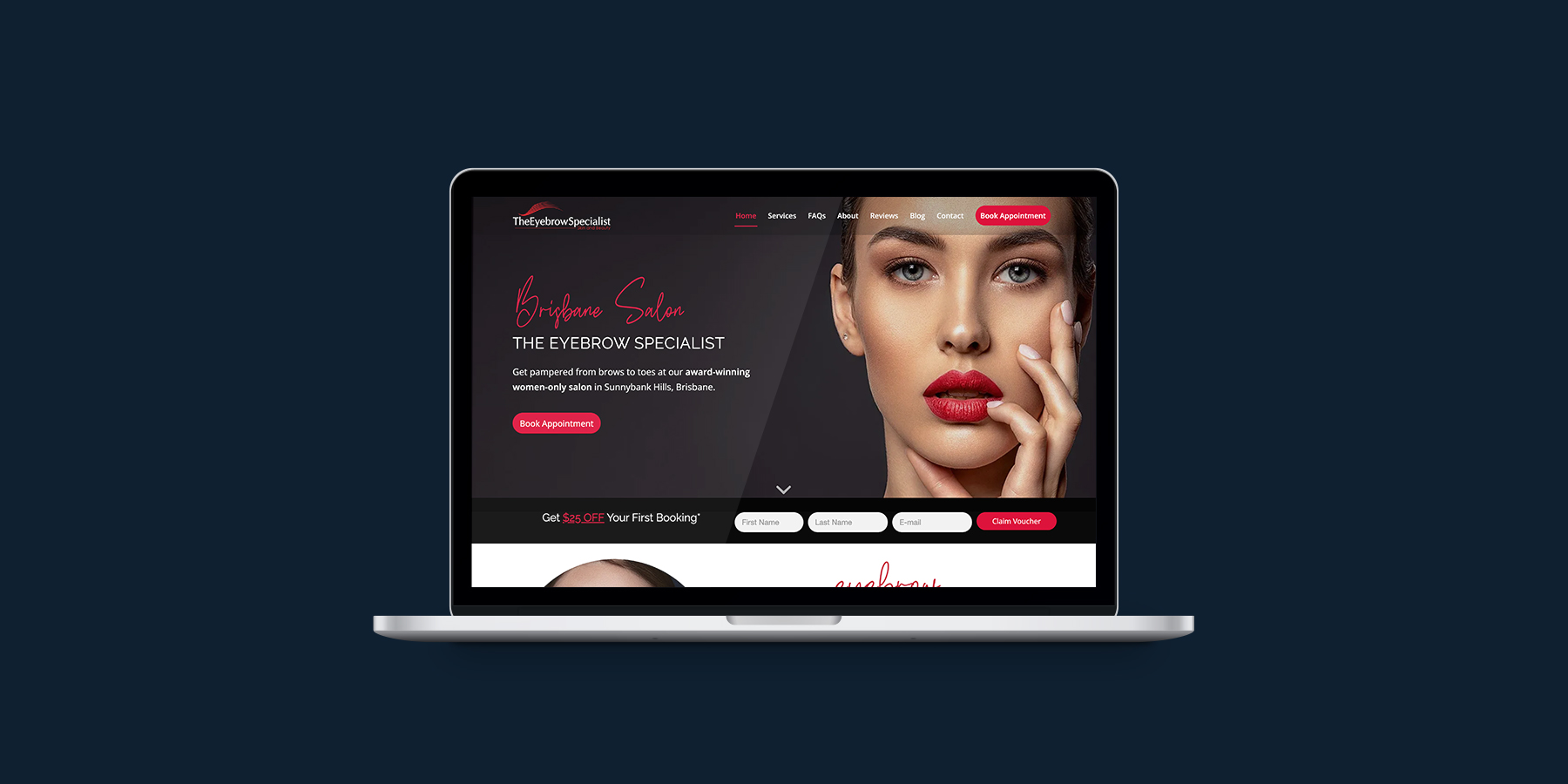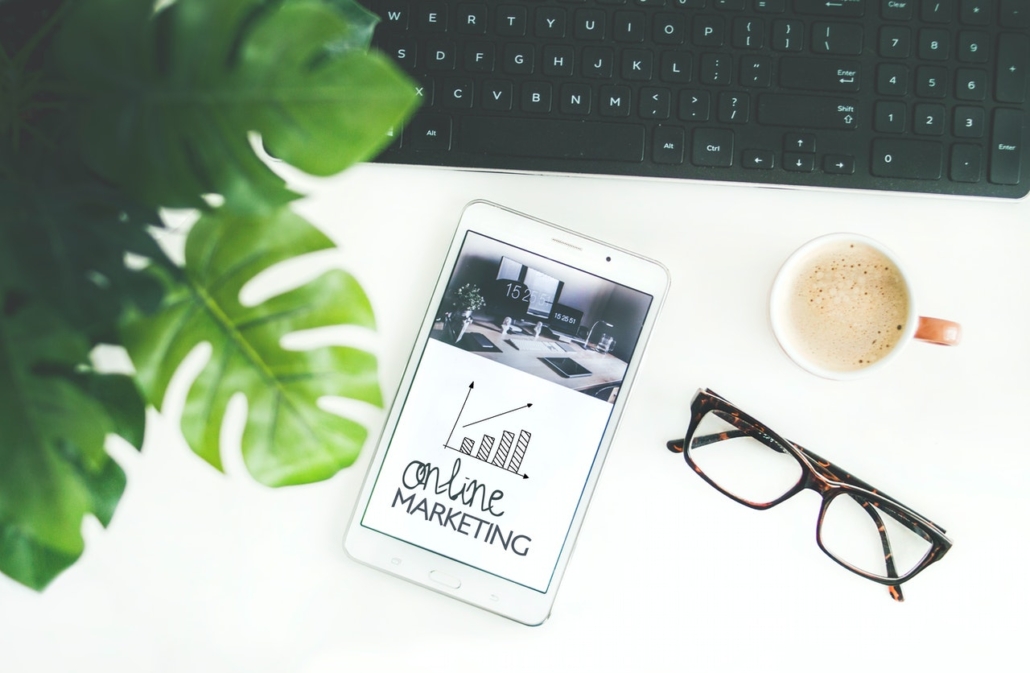It’s a simple question: What is marketing?
The answer, however, isn’t always so obvious. Most business owners I speak to have a very different idea of what marketing really is. For some, it’s simply advertising (in print or online). For others, it’s Social Media, PR or even just ‘word of mouth’.
Everyone’s got a different idea of what marketing means and how to best market their business. Here’s how I put it.
“Marketing is everything you do to GAIN and RETAIN customers.”
So, when I think of marketing, I think of it as a lot more than just running ads or posting on your Facebook page. If you’ve watched some of my videos or visited my marketing blog before, you would have probably already heard me talk about the 3 pillars of business success.
1. Attract
2. Convert
3. Deliver
In this blog post, I will give you a list of marketing strategies you can do within each of these pillars to grow your business, increase sales and leverage your time better.
Attraction – How to attract more potential customers
Attracting new customers is a crucial element of any business. It’s what fuels business growth and something that many business owners struggle with. Here are ten ways that will help you attract new potential customers continuously. You should be using a combination of these things in your business.
1. Have a great website
Seems obvious, right? The truth is though that many businesses don’t utilise their website enough. In most cases, it’s an online brochure that merely talks about them, when your website can be so much more (here are some examples). There are certain elements every business website needs in order to convert visitors into leads and actual buyers. You can find a checklist of these 17 crucial elements here.
2. Be on Social Media
Again, this seems like an obvious one, however, many business owners don’t explore social media to it’s full potential. When I say be on social, I don’t just mean go create an account for your business on Facebook and Instagram. You need to be active and use these platforms to drive potential customers away from social and back to your website (where you are not competing with cat videos).
The problem with social media is that, if done well, it can be incredibly time-consuming. The answer to this problem is automation. Luckily, these days we have the tools and technology to allow for a hands-off social media strategy that allows us to post as often as we choose to on autopilot. Here’s a complete guide to automating your social media posts so you never have to worry about what to post ever again.
Social media is an incredibly powerful tool when it comes to engaging with your customers. Don’t dismiss it and use it to your advantage.
3. Run print ads
Even though I’m a digital marketer, I still believe print ads have their place. But it depends on your business, the audience you are trying to attract and what print media you have available in your particular market. The key to making advertising work is to track your success. The key to making advertising work is to track your success. Yes, I just said that twice.
Don’t just have your logo and a little blurb printed in a generic magazine or newspaper. Make sure you have a clear call-to-action (CTA) for readers to follow. Coupons work great in most cases, as they will allow you to track the success of your ads and calculate the exact return on investment.
Know your numbers:
- How much does the ad cost you?
- How many leads (i.e. coupons) did you receive as a result?
- How many of these leads actually purchased?
- What was the total revenue generated from the ad?
Example:
Say you invest in an ad that costs you $300. Your ad results in 100 enquiries, meaning your cost per lead is $3. If out of these 100 enquiries, 3 people end up buying (3% conversion rate) with a value of $200 per transaction, you generated total sales of $600. That’s a 100% return on your investment.
These numbers will, of course, vary depending on the type of business you’re in. In most cases, even if you just break even, it’s still worth advertising in the long run, as you will be building your list of potential buyers, which is the biggest asset in any business.
4. Run online ads (Google, Facebook, YouTube)
Even though online ads are very similar to print ads, I like to list them separately. The great thing about online ads is that you can be so much more specific with your targeting and only put your ad in front of people that are highly relevant. This will help you reduce ad costs and increase your conversion rates.
Say, you own a beauty salon in Sydney and decide to invest in a print ad in a local magazine. Now you are paying for the number of readers the magazine tells you they reach. However, out of everyone who reads it, only a very small fraction of readers will actually be based in your area. Out of the people in your area, only a fraction will actually be potential customers (not everyone needs a beautician). And out of those potential customers, only a fraction will actually notice your ad and even less will take you up on whatever offer you presented them with.
In comparison, a Facebook ad will allow you to run a much more targeted campaign. Going with the above example of a beauty business, you could choose to only put your ad in front of women between the ages of 30-50, who live in your local area and also have shown an interest in beauty businesses. Even though your audience is now much smaller, it is also a lot more targeted, meaning you will reduce your ad costs significantly and increase your conversion rates.
Again, print and online ads can both be great ways to attract new customers. The important thing is that you track your success and never invest in advertising that can’t be measured. Oh, and did I mention, never invest in advertising that can’t be measured? (you may want to write this one down)
5. Partner with other businesses
Business partnerships – also called joint ventures – are one of the fastest ways to grow your business and are heavily under-utilised. It’s important to understand though that not all business partnerships are worth your time. Try to only focus on businesses that will have a significant impact on your marketing.
I recently helped two of my clients join forces, who are based in the same city. One is a local café with a huge customer database of over 10,000 people; the other is a massage business that had only started out a year earlier. Most massage business owners would go around putting flyers in local cafes and other places, which is incredibly time-consuming and will get you little or no results.
But instead, we wanted to leverage the huge database of people the cafe already had, so we sat down with the owner and explained that we would like to send a complimentary $25 massage voucher to every single customer on their list. And to put the focus on them, we wanted to make it look like it’s coming from them as a gift to their customers. They look good for spoiling their customers and the owner of the massage place was putting her business right under the nose of 10,000 locals.
All we had to do was write one email that went out to 10,000 people. And to take things even further, we even made this email a part of the café’s automated email marketing. That means that the gift card did not only go out to everyone on the list at that time but every future customer will receive it, too!
As a business owner, make sure you value your time and only focus on marketing strategies that have the biggest impact on your bottom line. Business partnerships are one of the best forms of leveraging your time and resources.
6. Write a blog
Ok, this one probably sounds boring to most business owners and, at first, you may not see the value in doing it. Let me try to change the way you look at blogging.
As business owners, we have conversations with customers daily. They ask us questions about our products and services, they voice their worries, hopes and fears. They want to feel heard and we want to show them that we know our stuff. A blog allows you to do all of that at the same time and in a much more leveraged way.
Use short articles to answer your customers’ burning questions, help them to understand what you do and how it will help them in their own life or business. Even with just one good article, you can attract plenty of traffic by sharing it on social media, on other websites, in your email marketing, and even in your ads. Everywhere!
Your customers are already looking for the information they need online, so you might as well be the one giving it to them and position yourself as the expert in your industry.
I like to compare blogging to renting vs. owning real estate. You can pay for traffic each month (renting) or you can provide value on your website that people come back for (owning real estate). Every article you put on your website becomes a timeless asset you can use to generate traffic for years to come.
Tip: Hire a writer to help you come up with and write 12 quality articles to put on your website. Then share these articles on social media each month and link to them in your email marketing. You’ll see your traffic increase significantly (and improve your search engine rankings as a result)!
7. Optimise your website for search engines like Google & Bing (SEO)
Despite what many business owners think, SEO (search engine optimisation) is not dead. Search engines just have gotten a whole lot smarter!
SEO is no longer just about having a bunch of keywords on your website that your customers are searching for. These days, search engines like Google scan your website for a lot more, such as readability, quality of content, how long visitors spend on your site, which pages are shared frequently on social media, the list goes on.
So, how do you take care of all this yourself? Simple. Focus on quality content on your site that people actually want to read, watch and share. That’s why the previous point (blog posts) is so important. Engaging videos are also a great way to connect with your visitors and keep them on your site longer.
There are plenty of resources on how to do great SEO out there. If you have a WordPress website, be sure to install the Yoast SEO plugin to help you optimise each page and article for search engines.
8. Run a competition or giveaway
Giveaways are a great way to reach new potential customers, and they are a lot cheaper to run than other forms of marketing.
The idea of a giveaway is to ask people to enter their details for a chance to win a prize. This is a fast way to build a list. You want to make sure that the prize actually attracts potential customers and not those who are just in for the freebies and who were never going to buy from you.
I see many business owners make the mistake to give away an iPad or similar as a prize. That’s way too generic. Anyone who wants an iPad will enter, which is not what we want. You want to use your give-away specific to your product or service in order to attract the right kind of people.
If you are an accountant who focuses on Xero, for example, don’t give away a free Netflix subscription. Instead, consider the prize to be a free Xero Setup and Consultation to streamline your accounting (valued at $495). That way you are only attracting business owners who would actually be a good fit.
The mistake I see many business owners make ist that they run the giveaway simply for the engagement. But engagement doesn’t equal sales. The whole purpose of a marketing activity like this, especially if you invest the time to set it up properly, is to build a list of qualified leads that you can reach out to afterwards. So don’t stop at the giveaway – think about the offer you can send to all those who entered but didn’t win. This is where you really turn your giveaway into profit.
9. Run a survey or quiz
A quiz or survey is another great way to build a list fast and gain valuable insights about the needs of our customers. You’ll want to come up with a set of questions that helps you improve your product or service and identify what may be missing.
If you don’t have an audience at the moment that you can send your survey too, consider partnering with a business that shares your target market and could also benefit from the data generated. You could incentives the survey, which may help to increase responses but could also result in lower quality leads and dishonest answers from people who just took the survey for the prize.
If you would like to learn more about how to use surveys effectively, I highly recommend reading the book ASK by Ryan Levesque. You can download a free copy here.
10. Send a press release to media outlets
A press release can get you lots of free publicity in major newspapers, magazines and news websites. Once you discover this magical strategy, you’ll never want to pay for print advertising again! How much would a full-page article in a major newspaper be worth to you? Exactly? And it’s so much more powerful and memorable than any ad you paid hundreds, maybe even thousands of dollars for.
The key is to have a good story that journalists can pick up and elaborate on. Before you write a press release about a new product you launched or a sale you have going, put yourself in the shoes of a journalist. What would their readers want to read about? Tell stories that are not directly about you, but in which you or your business play a role somehow.
Which story would you rather read?
- Local roofing company launches new website and is open for business
- Local roofer helps the homeless have a roof over their head for Christmas by handing out free tents
There is no way a journalist would pick up the first headline. Because, frankly, nobody cares. The second story is something they can actually work with. Be strategic about the story you want to tell. The first rule of writing a press release is to NEVER SELL your business or products. Focus on helping the journalists to find the story they are so desperately looking for to hit their quota of articles they need to write each week.
Download my free press release template here to have your press release written in no time.
Conversion – How to turn browsers into buyers
11. Create a lead magnet
If you want to accelerate your email list growth, a lead magnet is your friend. A lead magnet is anything you can offer your subscribers for free in return for signing up. This could be:
- a discount or value voucher
- an ebook
- a checklist
- a template or time-saver
- a helpful video
- a free trial
- or anything else of value to your audience.
The key is, it needs to be highly valuable to your ideal target audience and it needs to be free. It should be a first step people can take into the transformation your offer them.
12. Use email automation to educate and engage with your audience
To this day, email marketing has remained one of the most profitable marketing activities out there. It’s a great way to keep in touch with your audience and create sales opportunities. But let’s be honest… who has time to sit down to send out weekly newsletters anymore?
That’s where automated email sequences come in handy. Rather than growing your list to send out the occasional email blast, think of email marketing as taking your subscribers on a journey. From the day they join your list, you can map out an entire sequence of emails, each designed with a specific purpose in mind.
You could include emails that ask questions to learn more about your customers’ needs, showcase your testimonials, answer frequently asked questions, invite them to leave a review, make them aware of other channels you’re on, like social media, and so much more.
This is one of the best ways to leverage your time and frequently engage with potential customers to connect, educate and move them closer to the sale.
13. Use a chatbot to help people find what they are looking for faster
Chatbots have become a lot more common in recent years and they’re a fantastic tool to help you streamline customer enquiries. You can program a chatbot to directly answer specific questions, such as pricing, location, or opening hours, or to direct people to relevant pages on your website for example.
If someone starts a chat and asks if you have appointments available this week, you could direct them to your booking page where they can check availability and book themselves in, all without the need to interrupt your day.
You can think of a chatbot much like a phone options menu, where when you call are asked to press certain numbers for different types of enquiries. Except a bot allows us to design a much more natural conversation and flow.
Some chatbot software providers I have personally used and love are Chatfuel and ManyChat. Both integrate with social media platforms like Facebook and Instagram, but there are many other tools out there that let you integrate your bot directly with your website and other platforms.
14. Create a strong offer people can’t refuse
Sometimes, the difference between failure and success in business is the way you structure your offer. Just like McDonald’s did when they went from selling individual items to selling packaged meals. The famous line “would you like fries with that” added billions to their bottom line.
Could you add something to your offer for added value?
15. Run retargeting ads
Running ads online is a great way to increase brand awareness and attract new customers. However, it can be difficult to convert an audience at the first point of contact. A retargeting campaign allows us to follow those around that have expressed interest in our business before. Retargeting ads are also a great way to reactivate past clients or target specific segments of your audience.
If you have a webinar funnel, for example, you could show ads only to those who have previously watched your webinar. If you run workshops, you could target only those who have attended a previous workshop of yours. With a little creativity, the possibilities with retargeting ads are endless.
16. Find a way to help more people (when you do that, you will naturally sell more)
Seems like an obvious one, but sometimes simply by shifting our mindset we can create opportunities on a whole new level.
I like to do a little thought experiment and ask myself what I’d do if I had to help ten times more people than I currently am.
Could you change your business model and shift from selling 1-to-1 to 1-to-many? Could you offer a DIY option to serve more people at the same time?
Thinking about 10Xing your business can bring up some important questions that will put your business on the path of growth:
- Where would you find 10 times more customers?
- Would you have to change your processes to accommodate that growth?
- Would you have to hire new people to help you?
- What impact would you have on the world by helping more people?
- What impact would it have on your personal life?
To get you thinking about these things, I can highly recommend the book “The 10X Rule” by Grant Cardone. It will open your mind up to new possibilities.
17. Run ‘limited time only’ offers
Creating offers that are only available for a limited time can be effective in creating a sense of urgency and temporarily increasing sales. If your business operates in retail or e-commerce, you could purchase a small batch of a new product and promote it as ‘limited time only’ to increase sales over a short period of time.
It’s also a great way to test the market response to a new product before adding it to your regular offering. A café, for instance, could offer a new product for a limited time to measure its popularity and collect customer feedback. Then, if it performs well, make it part of their regular menu.
18. Be easy to do business with (I had to add this one)
It always surprises me how difficult some businesses make it to do business with them. As business owners, we should be focused on reducing as much friction as possible.
Make it easy for customers to pay using their preferred payment method. If it makes the decision for them easier, consider offering a payment plan or AfterPay.
Make it easy for customers to get in contact with you using their preferred contact method – whether it’s by phone, text message, social media, email, or through a contact form on your website.
Make the process easy and fun. You’ll be surprised how much impact ‘being easy’ can have on your bottom line.
19. Get to know your customers better and understand exactly what they REALLY need, want, and do not want
Never assume that what you have to offer (no matter how awesome it is) is what your customers need and want right now. Listen to their needs. Every customer is different and comes to you for a different reason.
Find out what their underlying motivation is for coming to you and try to meet their unique needs. Listening attentively can go a long way. And if you feel like your offer isn’t a good fit for you, don’t be afraid to let them know. The reality is, most people will respect you more for your honesty than for trying to make the sale at all costs.
Maybe they need something else first?
20. Make sure your website has all the right elements (just a page online won’t cut it)
Many business owners treat their website much like an online brochure. A little blurb about how long they’ve been in business, a contact page, some generic description about their products or services, and maybe a pricing page.
But your website can be so much more than that! Try looking at your website as your piece of real estate online. A well-designed website will:
- Establish your business as an industry leader
- Attract new potential customers
- Capture leads
- Book appointments
- Help sell your services or products
- Showcase your competence
- Educate your audience and answer pre-sale questions
- Act as a valuable resource
Delivery – Ways to grow your business during and after the sale
21. Provide great customer service
This should be a given, however, it’s astonishing how many businesses neglect this part of their business. Providing excellent service is a great way to build repeat business and increase “word of mouth”.
When you impress your customers, they are also much more likely to leave a positive review on Facebook or Google, which in turn will result in more organic traffic and a better reputation, helping you stand out from the competition.
22. Ensure people only buy something they actually need
As a business owner, it’s tempting to try and sell your product or service to anyone coming your way. However, selling to the wrong person can impact your business negatively. Make sure you only sell to people who will genuinely benefit from your product or service.
Similar to the previous point, this will only strengthen relationships with your customers, increase trust, and result in more referrals.
While it may benefit you in the short term, selling to the wrong kind of customers may result in an increase in refunds, mediocre reviews and decreased customer loyalty.
23. Offer good quality products and services (you want people to rave about it, not complain about it)
24. Overdeliver and exceed your customer’s expectations by offering something extra
25. Follow-up with your customers after the sale to see how they are going
26. Invite customers to leave positive reviews on Facebook, Google, TripAdvisor etc.
27. Add customer testimonials to your website
28. Send a thank-you note after the sale
29. Offer upsells and cross-sells
30. Consider offering a subscription/membership type product
This list is far from complete and you could certainly write a book about each point. But I hope that it will spark some ideas for what you can focus on in your business to grow and take it to the next level.
The biggest challenge most business owners face is finding the time to do marketing well. I can say from experience that this is only possible when automating the majority of your marketing processes. To help you do that, I have created a free step-by-step guide on how to completely automate your Social Media posts, as this is often one aspect my clients struggle with the most.
To your success,

 FlySocial Digital
FlySocial Digital FlySocial Digital
FlySocial Digital FlySocial Digital
FlySocial Digital

 FlySocial Digital
FlySocial Digital FlySocial Digital
FlySocial Digital


